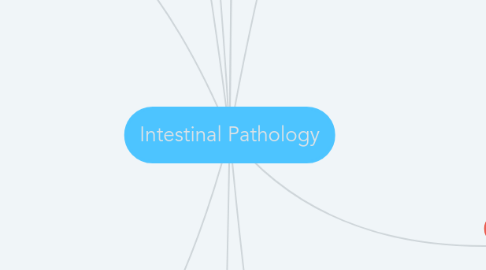
1. Models of IBD
1.1. Deficiencies in regulatory cytokines and receptors
1.1.1. IL-2 (R)
1.1.2. IL-10
1.1.3. TGF-B
1.1.4. KOS
1.1.5. IL-7
1.2. T Cells/ MHC alterations
1.2.1. TCR-a KO
1.2.2. HLA tg
1.2.3. MHCII KO
1.2.4. STAT-4 tg
1.3. Spontaneous
1.3.1. HeJBir mouse
1.3.2. Cotton top tamarin
1.4. Epithelial perturbation
1.4.1. Gai2 KO, N-cadherin tg
1.4.2. mdr1 a KO
1.5. Chemically induced
1.5.1. Acetic acid
1.5.2. Immune complex/ formalin
1.5.3. TBNS/ ethanol
1.5.4. Indomethacin
1.6. Microbial Products
1.6.1. Dextran sulphate
1.6.2. Carrageenan
1.6.3. lymphogranuloma venerum
1.6.4. Peptidoglycan polysacharride
1.6.5. Citrobacter
1.7. Transfer models
1.7.1. CD4 C45RB into SCID
1.7.2. Bone marrow into e26 tg
1.7.3. CD4 into SCID
2. Induction of intestinal inflammation
2.1. Increased proliferation- crypts deepen
2.2. cytolytic and cytotoxic factors shrink villi
2.3. can be triggered by inflammatory inducers i.e. LPS
2.4. Marked by formation of granulomas or crypt ulcers in ulcerative colitis
3. Probiotics
3.1. Compete with potentially pathogenic bacteria
3.2. Induce a shift of immune response from Th1 to Th2
3.3. Increase IgA secretion
3.4. Digestion of lactose
4. Driving factors of IBD
4.1. Th1/ TH17 respnse always induced regardless of trigger
4.2. May be augmented by IL-18- upregulated in Crohn's and produced in large amounts by epithelial cells
4.3. Upregulated TNF and iNOS production by lamina propria cells and intraepithelial lymphocytes, as well as epithelial cells- mediates pathology
5. Possible Treatments
5.1. Anti-inflammatory cytokines
5.2. Anti-cytokine antibodies
5.3. Antisense oligonucleotide against NFKB
5.4. Anti CD4 and anti TCR where antigen is known
5.5. Downregulate adhesion molecules- antisense oligonucleotide against ICAM-1, antibodies against MAdCAM
5.6. Nonspecific inflammatory mediators
5.7. Oral tolerance using haptenised colonic proteins
5.8. Manipulation of luminal contents with antibiotic treatment and probiotics
6. When OT breaks down intestinal pathology becomes effective (IBD)
6.1. Coeliac Disease
6.1.1. Loss of tolerance to wheat gluten
6.2. Cow's milk allergy
6.2.1. Loss of tolerance to milk proteins
6.3. Crohn's disease
6.4. Ulcerative colitis
6.5. Graft versus host disease
6.5.1. Bone marrow transplants
6.6. Parasite infection
6.6.1. GI helminths, toxoplasma, cryptosporidia
6.6.2. Lack of villus can lead to malnourishment and diarrhea, water, food and nutrients cannot be effectively absorbed
7. Factors inducing IBD
7.1. Environmental factors
7.1.1. Antigen
7.1.2. Hygiene
7.1.3. Smoking
7.2. Specific antigens
7.2.1. Bacterial infections
7.2.2. Viral infections
7.3. Ubiquitous antigen
7.3.1. Intestinal flora
7.3.2. Dietary antigen
7.4. Auto-antigen
7.4.1. Cross reactivity with environmental antigens
7.5. Endogenous factors
7.5.1. Neuroendocrine system
7.5.2. Substance P
7.6. Primary Immune defect
7.7. Epithelial cell defect
7.7.1. permeability defect
7.8. Genetic Susceptibility
7.8.1. MHC
7.8.2. TNF
7.9. Non-immune defence mechanisms
7.9.1. Gastric acid
7.9.2. proteolytic enzymes
7.9.3. anti-microbial molecules
7.9.3.1. defensins
7.9.3.2. cryptidins
8. Microflora Functions
8.1. Metabolic
8.1.1. Fermentation of non-digestible dietary products and mucus
8.1.2. Salvage of energy
8.1.3. Production of vitamin K
8.1.4. Absorption of ions
8.2. Trophic
8.2.1. Control of epithelial cell proliferation and differentiation
8.2.2. Development of homeostasis of the immune system
8.3. Protective
8.3.1. Protection against pathogens (barrier eeffect)

